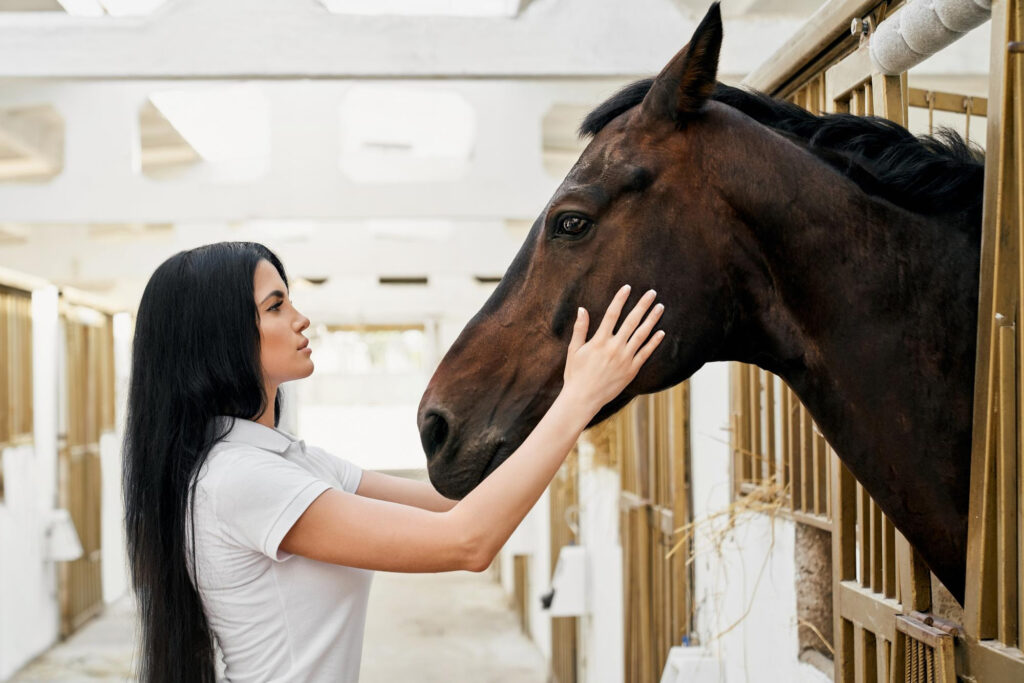In order to participate in the exhilarating world of horse racing, there are certain entry criteria that both horses and riders must meet. This ensures the safety and fairness of the sport while maintaining the highest standards of competition. Here are the key requirements for aspiring racers:
Age and Health
Horses entering the world of horse racing must be at least two years old. This minimum age ensures that the horse has developed the necessary musculoskeletal and cardiovascular systems to handle the physical demands of racing. Additionally, horses must undergo thorough health checks to ensure they are free from any underlying medical conditions that could jeopardize their performance or well-being.

Training and Fitness
To excel in horse racing, horses must undergo rigorous training to develop their speed, agility, and endurance. Trainers play a crucial role in preparing horses for the challenges they will face on the race track. They employ a variety of training techniques, including regular exercise routines, proper nutrition, and specialized workouts tailored to each horse’s individual strengths and weaknesses.
Registration and Licensing
To participate in official horse racing events, both horses and jockeys require proper registration and licensing. Horses are registered with the relevant racing authorities, which includes verifying their pedigree and ownership. Jockeys must obtain licenses that demonstrate their skills, knowledge, and adherence to safety regulations. These measures ensure the integrity of the sport and protect the interests of all participants.
Good Endurance Horses

Endurance racing is a discipline that tests a horse’s stamina, agility, and ability to cover long distances. Good endurance horses possess specific qualities that enable them to excel in this demanding equestrian sport:
Stamina and Endurance
Endurance horses are known for their exceptional stamina and endurance capabilities. They can maintain a consistent pace over long distances, often covering 50 to 100 miles in a single race. These horses have a natural aptitude for conserving energy and efficiently utilizing their resources, allowing them to perform at their best throughout the entire race.
Athletic Build and Strong Legs
To endure the rigors of long-distance racing, endurance horses have a well-developed and balanced athletic build. They typically have lean bodies with strong muscles, allowing them to efficiently carry their weight over extended periods. Additionally, their legs are built to withstand the repetitive impact of galloping on various terrains, reducing the risk of injuries.
Temperament and Trainability
Good endurance horses possess a calm and cooperative temperament, making them easier to handle during long rides. They should have the ability to adapt to changing environments, remain focused on the trail, and maintain a steady rhythm. Trainability is also crucial, as these horses must be responsive to their rider’s commands and capable of making quick decisions in challenging situations.
Preparing Your Horse for Racing
Preparing a horse for racing requires careful attention to detail and a systematic approach. Here are some essential steps to ensure your horse is ready to perform at its peak:
Fitness and Conditioning
Adequate fitness and conditioning are fundamental to a horse’s success on the race track. Establishing a well-rounded training program that includes regular exercise, controlled workouts, and rest days is crucial. Gradual increases in intensity and distance help build the horse’s strength, endurance, and cardiovascular fitness, ensuring they are in optimal shape on race day.
Proper Nutrition and Hydration
Providing horses with a balanced and nutritious diet is vital for their overall well-being and performance. High-quality forage, supplemented with appropriate concentrates, helps meet their energy requirements. Hydration is equally important, and access to clean water should be available at all times. Consulting with an equine nutritionist can help tailor a diet plan specific to your horse’s needs.
Regular Veterinary Care
Regular veterinary check-ups are essential to monitor your horse’s health and address any potential issues promptly. Vaccinations, deworming, dental care, and hoof maintenance should be part of the routine. A healthy horse is better equipped to handle the demands of racing, reducing the risk of setbacks or injuries.
Race Rules: Upholding Fairness and Safety
Horse racing operates under a set of rules and regulations designed to maintain fairness, integrity, and the well-being of all participants. Here are some key race rules that govern the sport:
Weight Carried
Race rules stipulate the weight that each horse must carry during a race. This weight includes the jockey’s equipment and serves to level the playing field by ensuring horses of varying abilities carry proportional burdens. The assigned weight takes into account factors such as age, sex, and past performance.
Drug Testing and Medication Control
To maintain a level playing field and safeguard the welfare of horses, strict drug testing and medication control protocols are in place. Horses are subject to pre-race and post-race drug tests, and the use of certain substances is strictly prohibited. Violations can result in penalties, including disqualification and fines.
Riding Tactics and Race Etiquette
Jockeys must adhere to specific riding tactics and race etiquette to ensure safety and fairness. They are expected to ride within the rules, avoiding dangerous maneuvers or interfering with other horses. Obstruction, interference, or unfair riding can lead to disqualification and disciplinary actions.
Exploring Other Types of Horse Sports
Horse racing is just one of the many equestrian disciplines that offer excitement and fulfillment for both riders and spectators. Here are a few popular alternatives:
Show Jumping
Show jumping combines the precision of technical riding with the exhilaration of jumping over obstacles. The goal is to complete a course of jumps cleanly and within the allocated time. Show jumping competitions test a horse’s athleticism, agility, and ability to navigate challenging courses.
Dressage
Dressage is often referred to as “horse ballet” due to the harmonious movements and precise communication between horse and rider. It focuses on the development of the horse’s obedience, suppleness, and flexibility. Judges assess the horse’s elegance, balance, and responsiveness to subtle aids from the rider.
Eventing
Eventing is a comprehensive equestrian discipline that combines dressage, cross-country, and show jumping. It tests the versatility and endurance of both horse and rider. Eventing competitions consist of multiple phases, each showcasing different skills and challenges.
The Thrill of Horse Racing
Horse racing has captivated audiences for centuries with its thrilling displays of speed, athleticism, and the unbreakable bond between horse and rider. Whether you’re a participant or a spectator, the world of horse racing offers an exhilarating experience that celebrates the beauty and majesty of these magnificent animals.
Remember, success in horse racing requires a combination of diligent preparation, expert training, and a deep understanding of the sport. By adhering to the entry criteria, nurturing good endurance horses, and following proper race rules, you’ll be well on your way to conquering the race track and leaving a lasting legacy in the world of horse racing.
